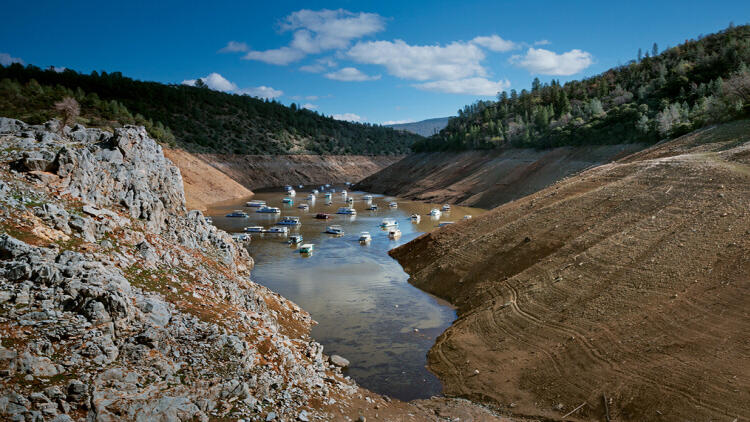The American West faces persistent drought, whether or not relief comes this winter. When will the hard choices be made?
For three generations the Diener family has farmed the same ten square miles of Central Valley dirt. In the 1920s they grew barley and alfalfa to feed the mules that powered the construction of Los Angeles. In the 1930s, as internal combustion replaced animal muscle, they grew cotton to bind rubber car tires.
Today, as California limps through its third year of drought, John Diener, his sons, and their land are getting into the cactus business.
SAN JOAQUIN RIVER, CA The San Joaquin, which begins high in the Sierra Nevada, navigates a dense grid of Central Valley farm fields as it flows northward toward the San Francisco Bay. More than 70 percent of the river water is used for irrigation. PANORAMA COMPOSED OF SIX IMAGES
SUN CITY, AZ The Central Arizona Project, a 336-mile-long system of canals and pipelines, carries Colorado River water through the desert to the Phoenix metro area. The population of the Phoenix area grew 4 times larger between 1970 and 2010. PANORAMA COMPOSED OF TWELVE IMAGES
LAKE MEAD, NV About 90 percent of the drinking water for Las Vegas comes from Lake Mead, the Colorado River reservoir created by Hoover Dam. As of early August the lake was only 38 percent full—a historic low. PANORAMA COMPOSED OF 13 IMAGES
RYE PATCH DAM ON THE HUMBOLDT RIVER, NV Mark Twain called the Humboldt River a “sickly rivulet,” but farmers in the fertile yet arid Lovelock Valley depend on it to fill the near-empty reservoir with water for their alfalfa and corn. In early 2014 no water reached this Nevada dam.
(National Geographic)



















